» posted on Thursday, September 15th, 2022 by Linda Lou Burton
Eyewitness News
Linda Lou Burton posting from Lake Nakuru National Park, Nakuru, Kenya –“Stop!” I yelled. A good safari driver knows to stop whenever he hears that word, and Daniel was a very good safari driver. He STOPPED. I’d spotted a rhino in the bushes; it was the first animal I saw this morning as we came down the hill, even before the lake was in view. Two things about this rhino seemed odd to me. It was in the bushes instead of open grassland, and it had a long POINTY horn. 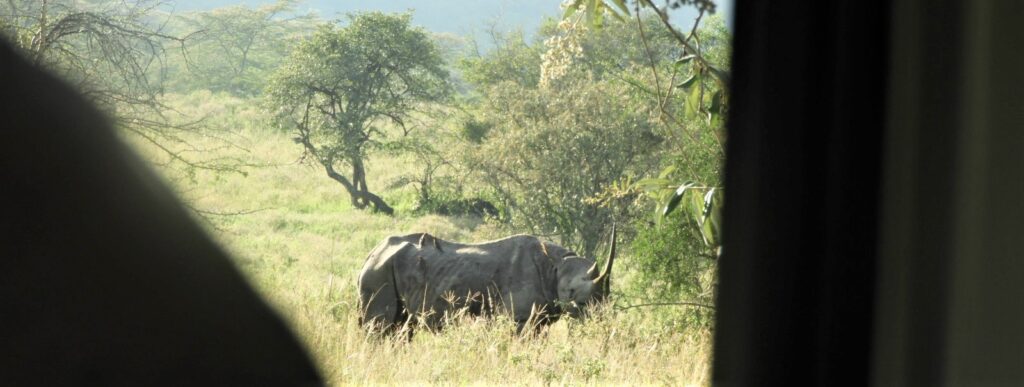
I zoomed the camera for a closer look. See what I mean?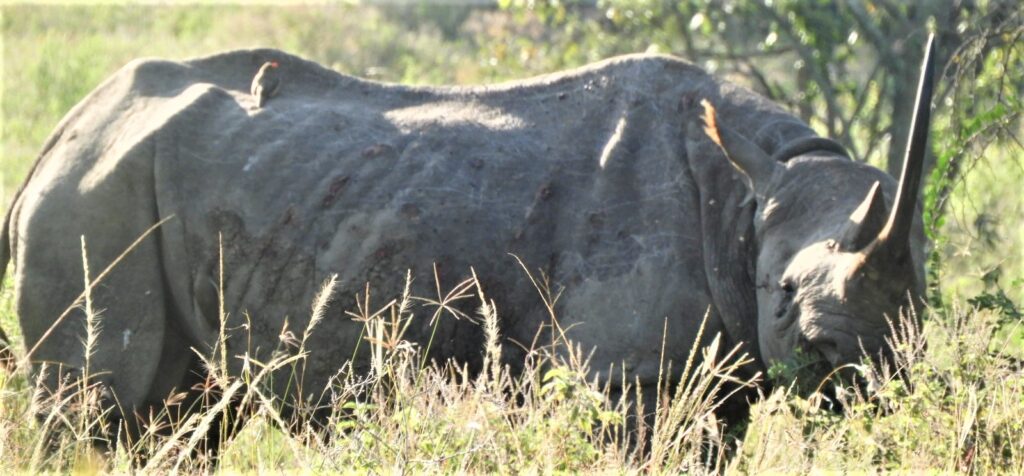
By now I’d been told about Black and White Rhinos, Southern and Northern Rhinos, so many species, which one was this? When you have an expert safari guide like Abdi AND an expert safari driver like Daniel, you get your answers right away. Today I learned even more about these unique critters who get chased down and shot at and mutilated by terrible awful poachers wanting only their HORN. Like where, and how, and what, they eat. Eye witness!
Rhino Factoids, aka, the Rhinocerotidae
- Black and White Rhinos are native to Africa (Asia has three different species).
- Rhinos are the second largest land mammal (elephant is largest).
- Rhinos have one or two horns made of keratin (like fingernails).
- Rhinos do not have front teeth (they rely on their lips to tear off grass or leaves).
The White-Black differences?
- White Rhinos are grazers and primarily feed on grasses. You know that “white” doesn’t refer to their color, they are greyish brown. It’s all about the WIDE mouth they have. They are “square lipped” – which is perfect for eating grass.
- Black Rhinos are browsers and primarily feed on leafy plants and branches. They have a narrow upper lip – which is perfect for ripping off leaves. Grayish in color, they also have a longer, leaner horn.
I saw this Mama and Baby in Ol Pejeta Tuesday morning.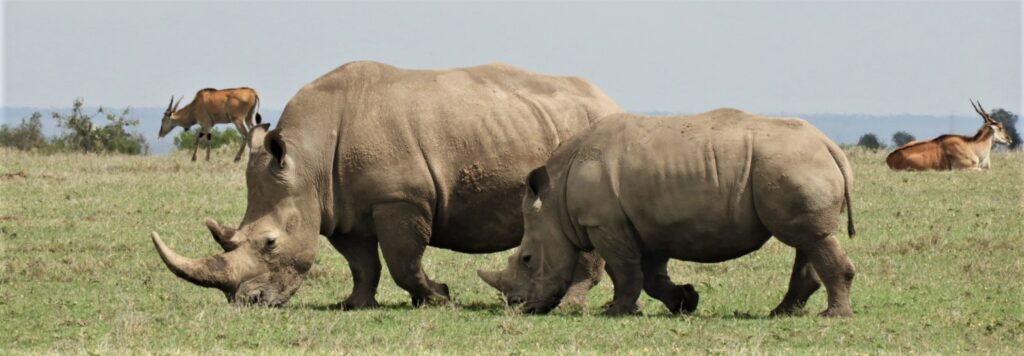
In addition to the big guy in the bushes, I saw this Mama and Baby at Lake Nakuru today.
And these guys. Now I can tell the difference!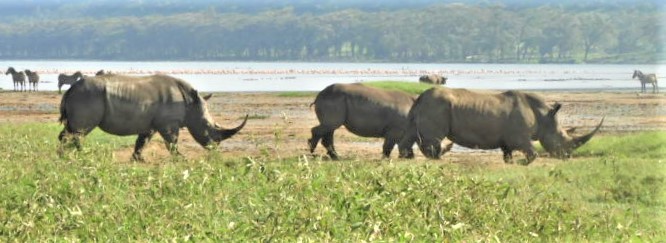
Next post: the BIRDS of Lake Nakuru, and the story of the LAKE itself. Why are the trees dying and flamingos leaving? Surprising answers. Isn’t this an eerily beautiful sight?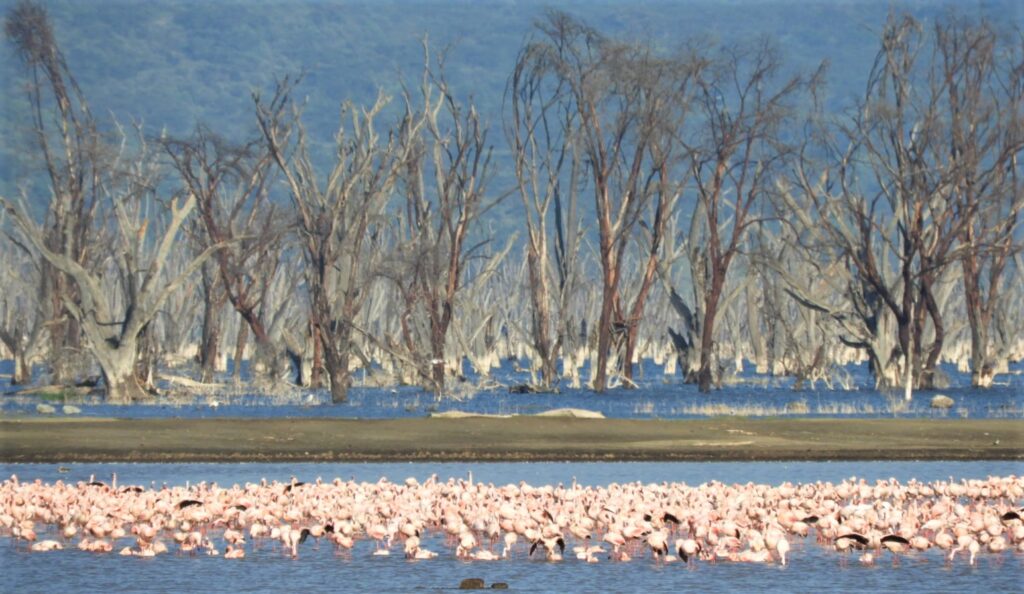
Lake Nakuru National Park https://www.lakenakurukenya.com/
